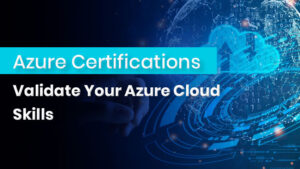
Azure Certifications – Validate Your Azure Cloud Skills
Azure Certifications – Validate Your Azure Cloud Skills Introduction Cloud computing has transformed the business landscape, providing scalability, flexibility, and affordability in a way
Limited-Time Offer! Get an exclusive 40% OFF on IPSpecialist Premium Monthly & Annual Plans. Use Promo Code: UPSKILLNOW at checkout.

Azure Certifications – Validate Your Azure Cloud Skills Introduction Cloud computing has transformed the business landscape, providing scalability, flexibility, and affordability in a way

Top Cyber Security Trends: What Every Organization Must Know Introduction In an era marked by digital transformation, remote workforces, and rapidly evolving threat landscapes,

Zero Trust vs. SASE: Everything You Need to Know Introduction As the cyber world continues to change, companies need to look beyond conventional security
Table of Contents
What is a Virtual Private Cloud (VPC)?
A Virtual Private Cloud is a cloud computing model which offers on-demand configurable pool of shared computing resources allocated within a public cloud environment while providing a certain level of isolation from other users of the public cloud. Since the cloud (pool of resources) is only accessible to a single client in a VPC model, it therefore offers privacy with greater control and a secure environment where only the specified client can operate.
Provisioning a private isolated section of the public cloud between one VPC user and all other users of the same cloud is achieved through allocation of a private IP subnet and a virtual communication construct such as a VLAN or a set of encrypted communication channels. Because of this isolation, the user accessing the cloud is in effect working on a ‘virtually private’ cloud as if the cloud infrastructure is not shared with other users, hence the name Virtual Private Cloud. A VPN function, allocated to each VPC user, secures the remote access of the organization to its VPC cloud resources by means of authentication and encryption. VPC is most commonly used in the context of cloud infrastructure as a service.
Amazon Virtual Private Cloud (VPC) is a commercial cloud computing service that provides users a virtual private cloud, by provisioning a logically isolated section of Amazon Web Services (AWS) Cloud. Enterprise customers are able to access the Amazon Elastic Compute Cloud (EC2) over an IPsec based virtual private network. Unlike traditional EC2 instances which are allocated internal and external IP numbers by Amazon, the customer can assign IP numbers of their choosing from one or more subnets.
With Amazon Virtual Private Cloud (Amazon VPC), you can:
This scenario (Figure 1) includes a virtual private cloud (VPC) with a single public subnet, and an Internet gateway to enable communication over the Internet. This configuration is recommended if you need to run a single-tier, public-facing web application, such as a blog or a simple website.
Figure 1. Key Components of the Configuration
This scenario (Figure 2) includes a virtual private cloud (VPC) with a public subnet and a private subnet. This is recommended this if you want to run a public-facing web application, while maintaining back-end servers that aren’t publicly accessible. A common example is a multi-tier website, with the web servers in a public subnet and the database servers in a private subnet.
 Figure 2. Key Components of the Configuration
Figure 2. Key Components of the Configuration
This scenario (Figure 3) includes a virtual private cloud (VPC) with a public subnet and a private subnet, and a virtual private gateway to enable communication with your own network over an IPsec VPN tunnel. It is recommended when you want to extend your network into the cloud and also directly access the Internet from your VPC. This scenario enables you to run a multi-tiered application with a scalable web front end in a public subnet, and to house your data in a private subnet that is connected to your network by an IPsec VPN connection.
 Figure 3. Key Components of the Configuration
Figure 3. Key Components of the Configuration
This scenario (Figure 4) includes a virtual private cloud (VPC) with a single private subnet, and a virtual private gateway to enable communication with your own network over an IPsec VPN tunnel. There is no Internet gateway to enable communication over the Internet. This is recommended if you want to extend your network into the cloud using Amazon’s infrastructure without exposing your network to the Internet.
© 2025 All rights reserved | Privacy Policy | Terms and Conditions | Sitemap | Cookie Policy




